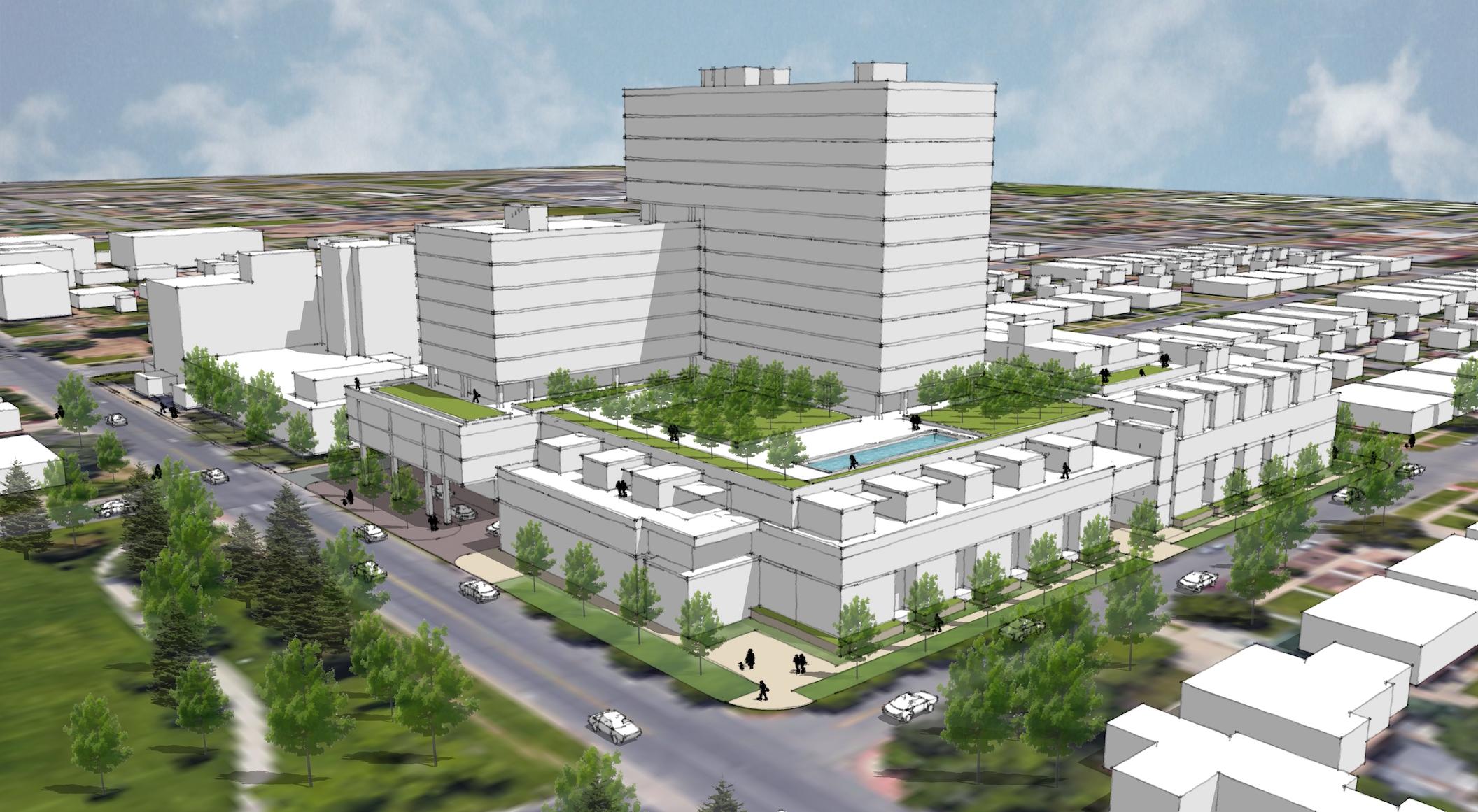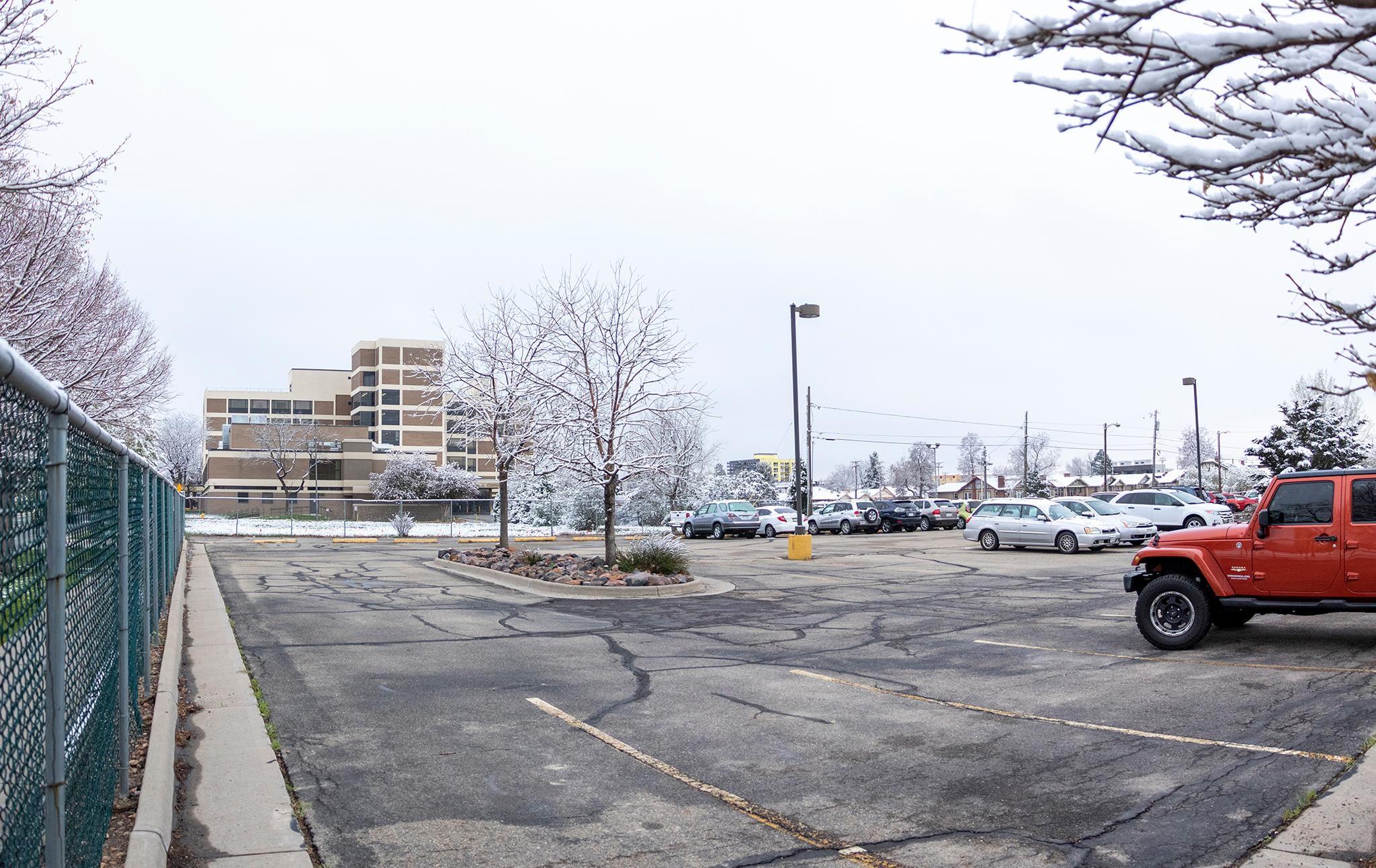More than a year since neighbors first took notice, a plan to replace a West Colfax parking lot with housing is close to potential approval.
David Zucker of Zocalo Community Development wants to build 16 stories high at 17th Avenue and Newton Street to create a one-block collection of about 320 homes. Half of those condos and apartments would serve people who aren't rich, including families of Denver Public Schools students without homes.
Two of the four nearby neighborhood organizations oppose the project. Some locals worry that traffic will increase, parking spots will decrease, and tall buildings will zap privacy and sunlight.
Zucker knows getting support from locals is a tall order. He calls himself "an uninvited guest." He also knows Denver desperately needs attainable housing. Building higher means more market-rate homes, and more market-rate homes mean Zocalo can subsidize 160 homes for families and others who need them, Zucker said.
"I think that if it was a smaller, lower building, there would not be intolerance for it," Zucker said Tuesday at a Denver City Council Land Use, Transportation and Infrastructure Committee.
Zocalo needs the council to change the site's building parameters, which only allow medical structures up to 10 stories high because of a 1970s hospital expansion that never materialized. The developer has plans for a cluster of buildings ranging from three stories to 16 on a 515,000-square-foot plot.

Ground-floor shops and restaurants would span 8,000 square feet, while offices would take up 5,000. Zocalo would give 6,000 square feet of rent-free space to a "community-serving organization or gathering space," the application states.
"It's a peace offering, a bargain we're supposed to accept because it's the only way we can create affordable housing," said Dan Larsen, a West Colfax local, during a Denver Planning Board meeting. "This is a false dichotomy. We don't need to damage a neighborhood in order to save it."
The LUTI committee advanced Zocalo's bid to a legislative session Tuesday.
City Councilman Paul López thinks the project will strengthen the neighborhood he represents, not damage it.
A parcel this big is rare, López said, and a developer willing to dedicate half of his project to house lower-income residents is even rarer. So he's listening.
"I understand not everybody wants it in their neighborhood," López said. "But because of the opportunity that exists, I don't mind being unpopular here and there."
The councilman sponsored the rezoning application so he cannot vote for or against it. If it passes, though, he said it will model how for-profit developers can build ample affordable housing.
López says his first ask of developers looking to build in his district is whether they have an affordable housing component. Most don't.
"No single drop ever thinks it's to blame for the flood," López said.
Citywide goals don't always align with the goals of people with backyards next to change.
West Colfax is hardly the first battleground of this fight. And the West Colfax Association of Neighbors and Sloan's Lake Neighborhood Association, who dislike the project, have counterparts all over the city that have fought large developments.

One difference with the Zocalo project is the large amount of affordable housing being volunteered without any city taxpayer subsidy.
The Sloan's Lake Neighborhood Association claims the market-priced units will generate gentrification and displacement by raising property values, despite the surge of attainable units. That theme is less prominent among detractors than the idea that the project is too big for people's tastes.
"In general, the proposed development is simply much too large and tall for the character of the neighborhood and the location for which it is being planned," wrote SLNA President Jane Parker-Ambrose in the group's official opposition letter.
Another major difference between this development fight and others: This is one of the first reviewed projects under Denver's new Blueprint Denver, a guide to growth over the next 20 years. This West Colfax area is considered a "community center," where buildings can be up to 12 stories, according to Blueprint. The document allows wiggle room for projects with "community benefits, including affordable housing."
The 2006 West Colfax Neighborhood Plan classifies the area as an "urban neighborhood" with buildings of one to four stories, Parker-Ambrose points out in her letter. But Denver city planners say the project fits because that same plan should "take advantage of a significant infill opportunity on a larger than average development site."
Here's the breakdown of how affordable those homes will be, according to the proposed contract with the city.
For-rent homes:
- At least 128 homes would serve people making 60 percent of the area median income, or about $43,000 for a household of two. At least 13 apartments would have two bedrooms.
- At least 24 homes would serve people making 50 percent of the area median income, or about $36,000 for a household of two. At least two units would have two bedrooms.
- At least 8 homes would serve people making 40 percent of the area median income, or about $29,000 for a household of two. At least seven units would have three bedrooms.
The income restrictions would last for at least 30 years.
For-sale homes:
- At least 8 homes would serve people making the area median income -- $72,000 for a household of two -- or less. At least six units would have two bedrooms and at least two units would have three bedrooms.
The full Denver City Council will hear from the public and vote on rezoning the site June 24.
This article has changed all "average area income" references to "area median income."













